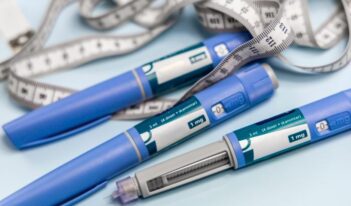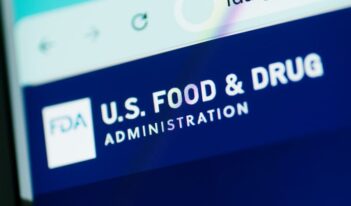
Current testing practices in the pharmaceutical industry exploit social and racial inequities.
The U.S. Congress passed the Kefauver-Harris Amendments to the Food, Drug, and Cosmetic Act in 1962. These amendments may be best known for requiring pharmaceutical companies to provide “substantial evidence” of their drugs’ efficacy to receive U.S. market approval. In other words, companies must now submit data to the U.S. Food and Drug Administration (FDA) to support any therapeutic claims they make about their products.
Perhaps less recognized is that these amendments also established a phased system of clinical testing that has become the backbone for how FDA evaluates new drugs for both safety and efficacy. They have also helped establish an industry for clinical trials which too often exploits social and racial inequalities.
To receive FDA approval, drugs must complete three phases of testing. Phase I trials focus on safety and tolerability studies. After preliminary nonhuman data confirm that human testing is reasonably safe and scientifically justified, Phase I clinical trials test investigational drugs to ensure that they are not unduly harmful for humans and to provide guidance on the appropriate doses for subsequent trials.
Phase I trials tend to be both small scale, enrolling just 20 to 100 participants, and short, with each participant’s involvement typically lasting only a few days or weeks. As part of the testing, Phase I trials normally require a “confinement” period in a research clinic, both so researchers can monitor participants for safety and ensure that participants follow all necessary restrictions on their activities, such as with diet and exercise.
If researchers do not identify any serious safety issues, companies next use Phase II trials to enroll patients with the target disease or condition to continue to assess safety but also for the first time to measure whether the investigational drug is effective in humans. Phase II trials tend to be modestly sized, enrolling a few hundred participants but lasting a few months or even up to two years.
Following promising results from Phase II trials, companies might then launch Phase III trials with up to thousands of participants who may be involved for years. Phase III trials continue to collect safety data but are primarily focused on measuring a drug’s efficacy—or, in a layperson’s terms, to determine whether it “works” to treat a disease or condition.
Popular conceptions of clinical trials are often based on Phase III trials, but a regulatory feature of Phase I trials—the allowed use of healthy research participants—makes them an often invisible and, at times, unsettling part of the testing of new pharmaceuticals.
Initial Phase I safety testing on healthy people is attractive to most companies for scientific, ethical, and economic reasons. The scientific value of healthy participants is that they do not have any underlying diseases or illnesses, so companies may more easily determine if their drugs cause any side effects during trials. Side effects that do occur tend to cause less harm to healthy participants than sick patients, which provides an ethical justification based on minimizing the risks of clinical trials. And healthy individuals are generally easier to recruit and enroll in clinical studies than sick patients, so companies have an economic incentive to use healthy participants to speed up their clinical development timelines.
Yet, regardless of the value of healthy people to pharmaceutical clinical trials, healthy participants must be motivated to take an investigational drug to assess its safety. To attract healthy people to their studies, companies offer to pay participants for their participation. Phase I trials pay an average of approximately $3,000, with payments ranging anywhere from a few hundred dollars to well over $10,000.
Although many people might be tempted to earn extra money through medical studies, participation in biomedical research is stigmatized, especially with paid enrollment. In addition, Phase I trials demand participants to undergo clinic confinement for several consecutive days or even weeks, which limits who is available to enroll. As a rule, Phase I trials are structured so that mainly people who are unemployed or have very flexible employment can participate.
In the United States, most healthy people who enroll in Phase I trials are men and racial and ethnic minorities. Sometimes people assume that college or medical students fill these studies to earn some extra money, but students in four-year colleges and graduate schools rarely enroll in these trials. Instead, the typical Phase I trial healthy participant is between the ages of 30 and 45, has low educational attainment, has a history of unstable employment, and, as a result, is part of a household income below the poverty line. In addition, because Phase I trials do not prohibit participation based on legal status or criminal record, many healthy people who enroll in these studies are immigrants or individuals who have been incarcerated.
In the Eastern and Midwestern United States, most Phase I trial participants are Black. In the western and southeastern United States, most are Latinx.
Increased awareness of exacerbated racial inequities during the COVID-19 pandemic has directed public attention to the need to diversify clinical trials by encouraging the enrollment of racial and ethnic minority participants. This attention to clinical trial diversity was a particularly powerful message in the context of COVID-19 vaccine trials.
If Phase I trials have already achieved high levels of diversity, however, why do higher percentages of racial and ethnic minorities in Phase I trials not feel like a recruitment success?
Two primary reasons exist for promoting the inclusion of diverse populations in research: robust science and social justice. A scientific rationale is to ensure that clinical trial results are as generalizable as possible to the populations of patients who might eventually be prescribed a marketed drug. On the other hand, social justice focuses on allowing diverse populations to access the potential benefits of research participation.
In the case of Phase I trials using healthy participants, the scientific value of these trials is already quite limited—narrowly defining safety by testing tolerability in people who are physiologically normal. In terms of social justice, Phase I trials create potential economic opportunities for healthy participants, but they also expose those participants to the risks of consuming investigational drugs without the possibility of any medical benefit. Thus, rather than promoting social justice, Phase I trials problematically exploit social and economic inequalities that disproportionately affect people of color who lack better options to earn income.
Healthy participants are those who are motivated by financial compensation and have the time and ability to be confined for long periods. Although people of color are not explicitly targeted for recruitment to Phase I trials, profound racial inequities influence which healthy people are the most willing to put their bodies on the line for the modest income offered. By maintaining a deeply racialized social system, the United States creates a market of healthy individuals for Phase I trials.
That the pharmaceutical industry ultimately benefits from this market of healthy participants further underscores how corporations exploit, for profit, the labor of people of color.
This essay is part of a seven-part series titled Race and Regulation.




